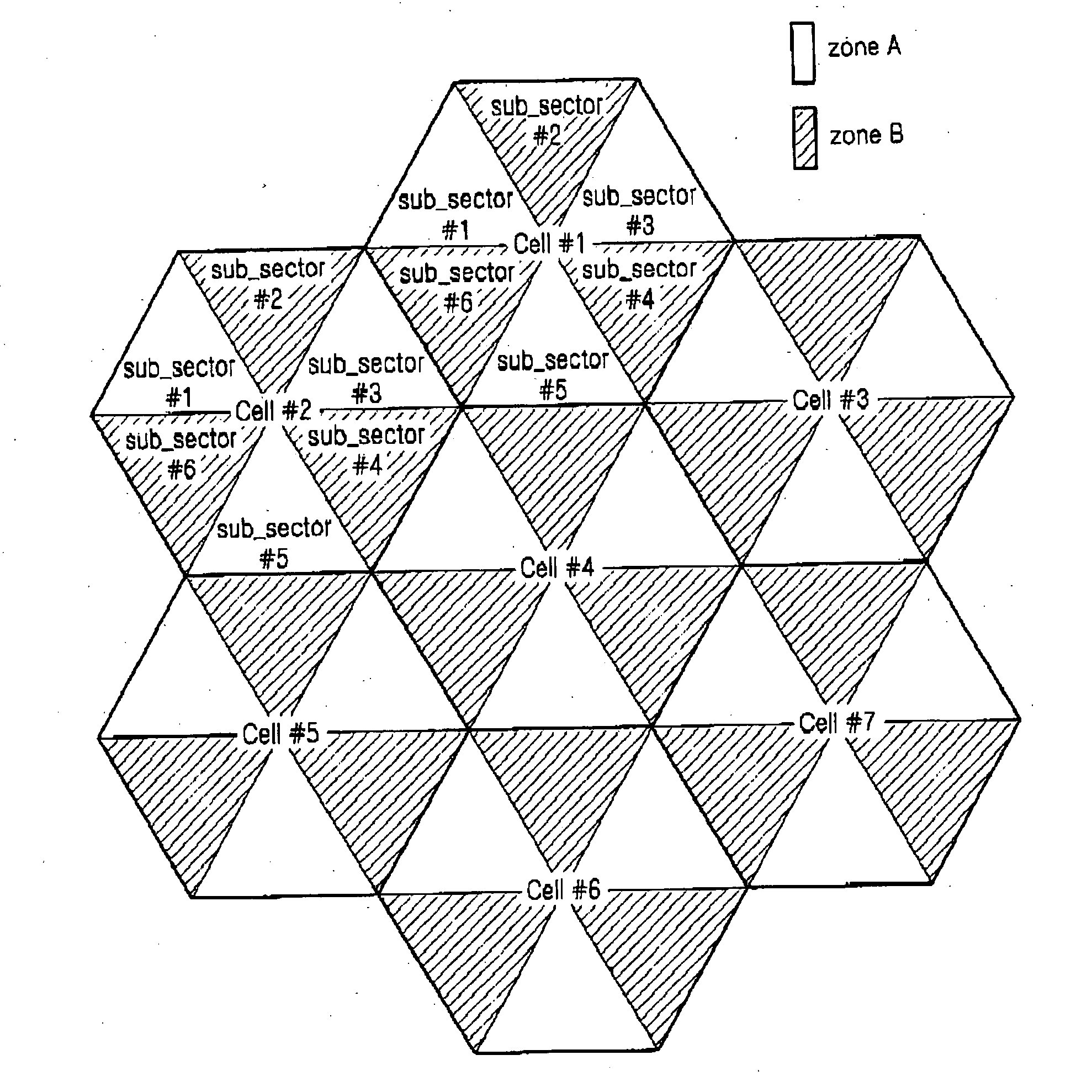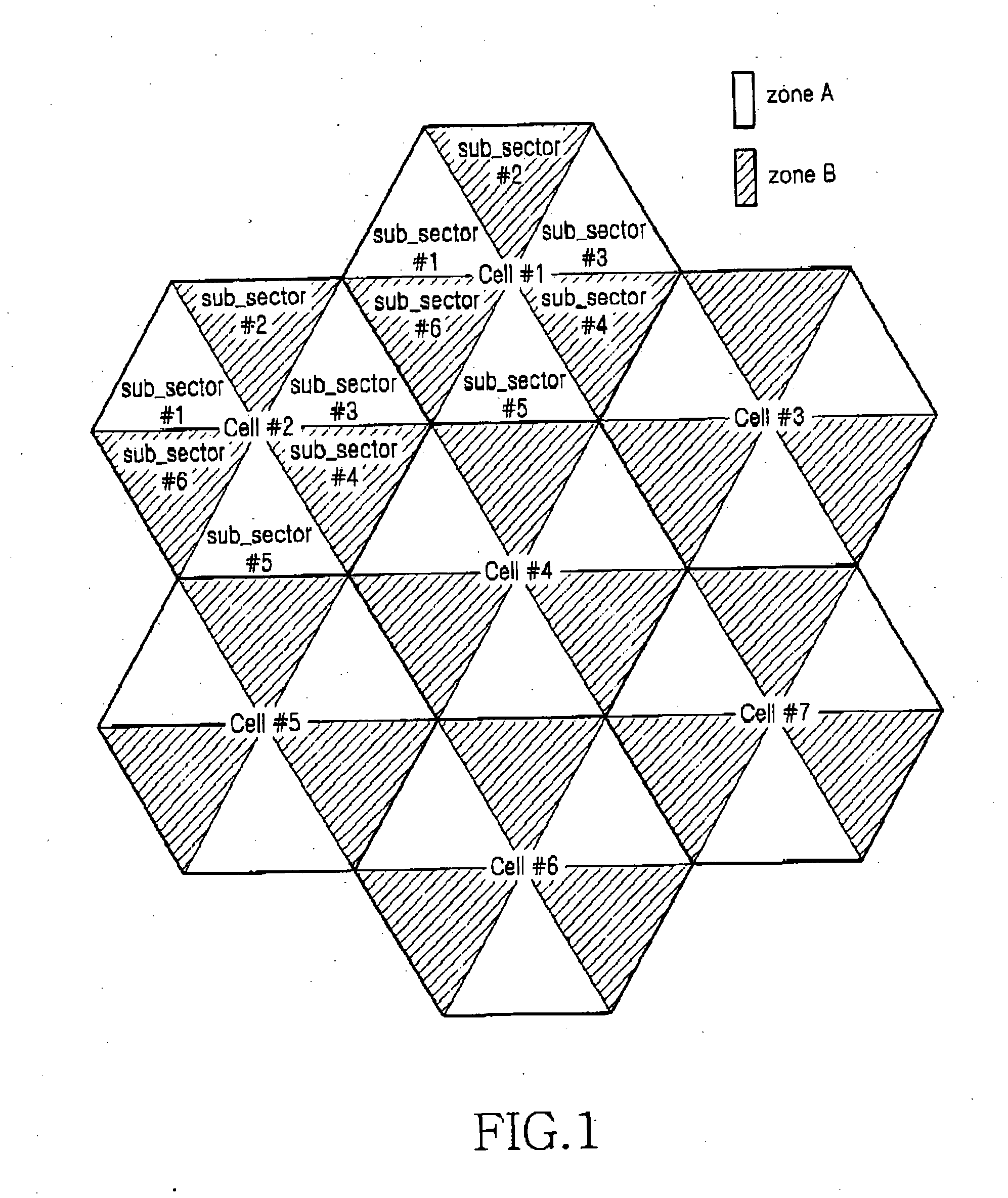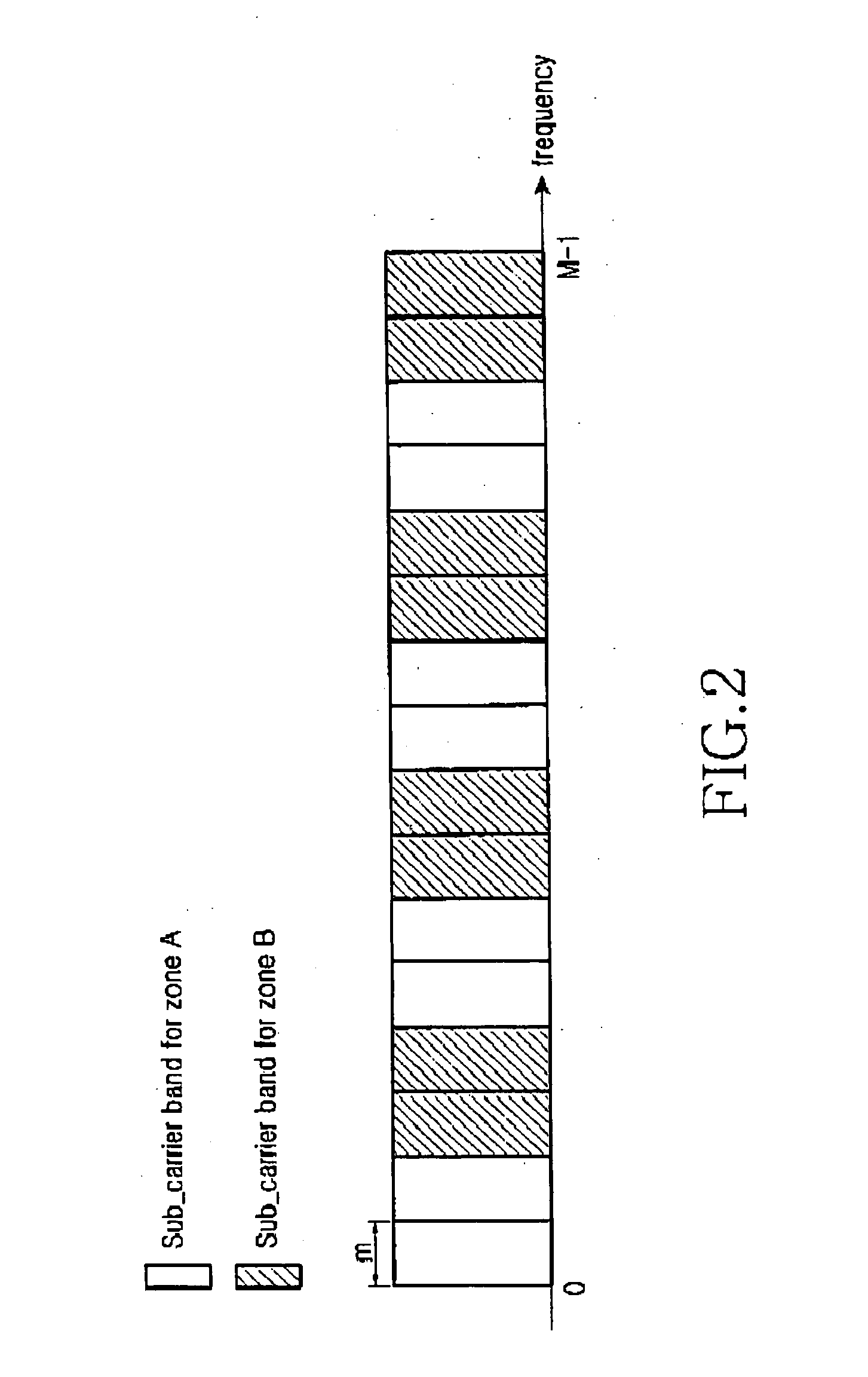Method for allocating resources in a multicarrier system and transmission apparatus using the same
- Summary
- Abstract
- Description
- Claims
- Application Information
AI Technical Summary
Benefits of technology
Problems solved by technology
Method used
Image
Examples
first embodiment
[0099] a) First Embodiment for Uplink Resource Allocation
[0100] The first embodiment divides the full subcarrier band into a first subcarrier region and a second subcarrier region having the same size. The first embodiment divides the first subcarrier region into subintervals associated with the subsectors in the first service zone in the same cell, and allocates subcarriers selected in the divided subintervals as uplink resources for the subsectors in the first service zone. Similarly, the first embodiment divides the second subcarrier region into subintervals associated with the subsectors in the second service zone in the same cell, and allocates subcarriers selected in the divided subintervals as uplink resources for the subsectors in the second service zone.
[0101]FIG. 7 is a diagram illustrating an exemplary method for distributing uplink resources according to the first embodiment for uplink resource allocation. Referring to FIG. 7, the full subcarrier bandwidth (including M ...
second embodiment
[0108] b) Second Embodiment for Uplink Resource Allocation
[0109] The second embodiment for uplink resource allocation, like the first embodiment, divides the full subcarrier band into a first subcarrier region and a second subcarrier region. Further, the second embodiment divides the total subchannels allocable in the first subcarrier region into as many subchannel groups as the number of subsectors belonging to the first service zone in one cell. This is applied in the same way even for the second subcarrier region. Therefore, it is preferable to determine the total number of channels as an integer that can be divided by the number of the subsectors.
[0110] For convenience, it will be assumed herein that the total number of subchannels allocable in each of the first subcarrier region and the second subcarrier region is 60. Therefore, assuming that the total number of subchannels is 120 in this way, if the first and second service zones are each comprised of three subsectors, 20 sub...
PUM
 Login to View More
Login to View More Abstract
Description
Claims
Application Information
 Login to View More
Login to View More - R&D
- Intellectual Property
- Life Sciences
- Materials
- Tech Scout
- Unparalleled Data Quality
- Higher Quality Content
- 60% Fewer Hallucinations
Browse by: Latest US Patents, China's latest patents, Technical Efficacy Thesaurus, Application Domain, Technology Topic, Popular Technical Reports.
© 2025 PatSnap. All rights reserved.Legal|Privacy policy|Modern Slavery Act Transparency Statement|Sitemap|About US| Contact US: help@patsnap.com



